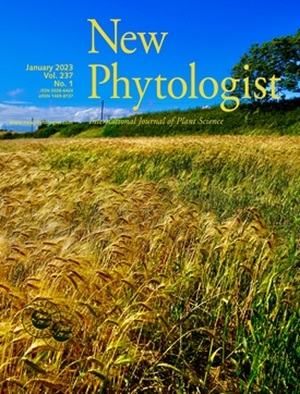Soil transplantation: complex interplay between soil microbes and the local environment.
IF 8.3
1区 生物学
Q1 PLANT SCIENCES
引用次数: 0
Abstract
Soil transplantation, the introduction of co-adapted soil microbes to maintain plant-microbe interactions in novel environments, is increasingly used to mitigate climate change effects on plants. However, it yields variable outcomes. We performed a reciprocal transplantation experiment at three elevations, plus a glasshouse experiment, where seedlings of three species were grown in rhizosphere soils from conspecific individuals collected from their original (home soil) or transplanted (away soil) sites. There were idiosyncratic patterns of plant growth for both effects of transplantation to new sites with their origin soils and for home vs away soils at new sites. These patterns likely reflect species-specific changes in the relative abundance of soil fungal pathogens across elevations. After transplantation, only a subset of taxa in the home soils persisted, and the compositional similarity in plant rhizosphere communities (in home soils) decreased with increasing elevation differences between the original and transplanted sites. Furthermore, the growth rate of transplanted plants was influenced by taxa from both home soils and local environments. Glasshouse experiment results did not predict patterns in the field transplantation experiment. Our findings underscore the interplay between soil microbes and the local environment in shaping plant-soil interactions following transplantation.土壤移植:土壤微生物与当地环境之间复杂的相互作用。
土壤移植是指在新环境中引入共同适应的土壤微生物来维持植物与微生物的相互作用,目前越来越多地用于减轻气候变化对植物的影响。然而,它产生了不同的结果。我们在三个海拔高度进行了互惠移植实验,并进行了一个温室实验,在根际土壤中种植三种物种的幼苗,这些幼苗是从它们的原始(母地)或移植(外地)地点收集的同种个体。移栽到新址的原生土壤和新址的原生土壤对植物生长的影响都有特殊的模式。这些模式可能反映了不同海拔土壤真菌病原体相对丰度的物种特异性变化。移栽后,原生土壤中只有一小部分分类群得以保留,原生土壤根际群落的组成相似性随着原址与移栽地海拔差异的增加而降低。此外,移栽植物的生长速率受到本土土壤和当地环境分类群的影响。温室试验结果不能预测田间移栽试验的模式。我们的研究结果强调了土壤微生物和当地环境在形成移植后植物-土壤相互作用中的相互作用。
本文章由计算机程序翻译,如有差异,请以英文原文为准。
求助全文
约1分钟内获得全文
求助全文
来源期刊

New Phytologist
生物-植物科学
自引率
5.30%
发文量
728
期刊介绍:
New Phytologist is an international electronic journal published 24 times a year. It is owned by the New Phytologist Foundation, a non-profit-making charitable organization dedicated to promoting plant science. The journal publishes excellent, novel, rigorous, and timely research and scholarship in plant science and its applications. The articles cover topics in five sections: Physiology & Development, Environment, Interaction, Evolution, and Transformative Plant Biotechnology. These sections encompass intracellular processes, global environmental change, and encourage cross-disciplinary approaches. The journal recognizes the use of techniques from molecular and cell biology, functional genomics, modeling, and system-based approaches in plant science. Abstracting and Indexing Information for New Phytologist includes Academic Search, AgBiotech News & Information, Agroforestry Abstracts, Biochemistry & Biophysics Citation Index, Botanical Pesticides, CAB Abstracts®, Environment Index, Global Health, and Plant Breeding Abstracts, and others.
 求助内容:
求助内容: 应助结果提醒方式:
应助结果提醒方式:


